- Topics
- Campaigning
- Careers
- Colleges
- Community
- Education and training
- Environment
- Equality
- Federation
- General secretary message
- Government
- Health and safety
- History
- Industrial
- International
- Law
- Members at work
- Nautilus news
- Nautilus partnerships
- Netherlands
- Open days
- Opinion
- Organising
- Podcasts from Nautilus
- Sponsored content
- Switzerland
- Technology
- Ukraine
- United Kingdom
- Welfare

In a bid to improve local air quality, many European countries are looking to shore-charged batteries to power short-hop ferries and tour boats
But many of the planned new vessels are taking longer than expected to come into operation, and concerns remain about crew training and safety
Our special report investigates the current state of play with electric vessels, exploring successes and drawbacks in a sector that has more challenges than might be apparent at first sight
Unions strive for seafarer safety
One of the leading experts on battery-powered ships is Odd Rune Malterud, assistant director and technical manager of the Norwegian Union of Marine Engineers. Sarah Robinson spoke to him about the technical challenges surrounding the operation of electric vessels
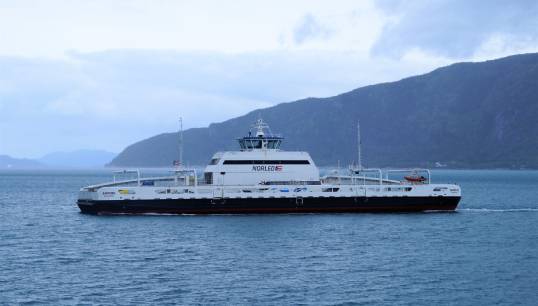
Sarah Robinson (SR): To start with, could you tell us about the risks to seafarers of operating battery technology, and what kind of training they need?
Odd Rune Malterud (ORM): The risks are, first, from the high voltage. The battery systems operate with a high voltage every second when they are onboard, and at the International Maritime Organization (IMO), we've been working on regulations and a training programme for that.
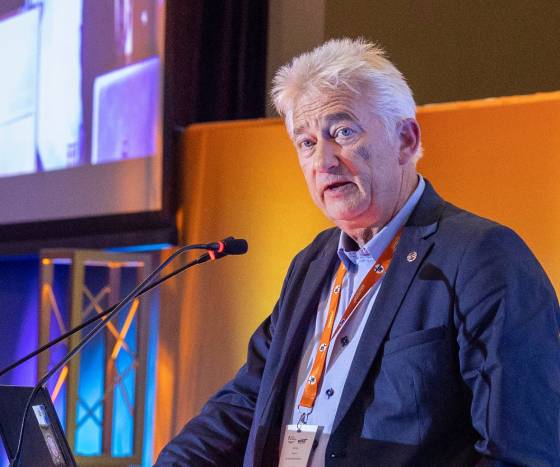
Odd Rune Malterud. Image: Brad Wakefield
We've also seen accidents with cables, because when you connect them via a magnetic or direct connection, the cables can vibrate and break, so seafarers and passengers could get an electric shock.
Another training need is to operate the big cooling system needed for batteries, and to handle electrical fires. If you get a fire, the battery will self-ignite, and you get a thermal runaway. The temperature there could be above 1,100C and melt the steel. So the construction and design here is very important. Firefighters ashore also need the same competence as the personnel onboard, so in Norway we have developed training for them too.
The worst danger from battery fires is that you get very, very toxic gases, and if even if you only breathe in the fumes once, you will die. So we need special personal protection equipment and training on how to check the fire temperature using infrared cameras.
Watchkeeping and manning is an important issue. For example, battery-powered ferries often lay up at night with the crew sleeping onboard. During the night, their main charging system will be on, with enormous voltage and heat. If you don't have watchkeeping with engineers on that system, when every cooling pump and ventilation fan is running, it could lead to a fire, putting all the crew in danger.
One more thing is that the ship's alarm system must be totally different from the old-fashioned systems. Basically, you need to be totally retrained to operate a battery ship system.
SR: As Norway has been working on national safety and training standards since the pioneering ferry Ampere was launched in 2011, are you satisfied that all the issues you mentioned above are covered in the standards?
ORM: Yes, we've developed training for seafarers and shore firefighters in conjunction with colleges, and these are good courses, which are also available in English in the UK.
The courses are mainly computer-based, but as part of the training it's very important for seafarers to do ship-specific training on their own vessel. There is no industry-wide design for battery systems or charging connections, so every vessel is different.
A lot of seafarers feel nervous about operating battery-powered vessels, but they're confident after the training. The problem is that these courses cost money. Our directives say the shipowners should pay for them, but they don't want to.
We also have guidelines for the offshore oil and gas industry, developed by the industry group Together for Safety, which I am a part of. It's because batteries are also used on drilling ships and offshore service ships. Here we have recommendations about where to place batteries – either under the deck in a specially-constructed room or in a container on deck, because of the danger.
There is no industry-wide design for battery systems or charging connections, so it's very important for seafarers to do ship-specific training on their own vessel Marine battery-powered ships expert Odd Rune Malterud
SR: You mentioned that you have been working on standards for safety and training at the IMO as well as in Norway. How has that been progressing?
ORM: Yes, we do this through the International Transport Workers' Federation (ITF), which is a non-governmental organisation that speaks for seafarers at the IMO. I am the chair of the ITF Maritime Safety Committee, and we worked to see how we could apply the lessons learnt in Norway about lithium-ion batteries internationally through the IMO.
We produced interim battery guidelines at the IMO and circulated them globally, and we're working now on further standards for all alternative fuels. But it's up to every individual flag state to implement the guidelines, and that is the biggest challenge we have.
So we really need all the affiliate unions of the ITF to pick up on this and press their national governments to implement the guidelines. Unions can also help to make sure shipowners pay for the training.
One challenge with governments is to make sure they understand that battery-powered vessels are totally unsuitable for military use, because of the fire risks and lack of charging infrastructure, so they should not be requisitioning battery-powered merchant vessels in a war situation.
However, I think we can all agree that human safety is the most important thing, and it costs very little to give the competence training. It certainly costs a lot more money when your battery catches fire and the ship is lost.
SR: How can people find out the safety standards for battery-powered ships and their rights to receive training? What should you do if you feel you're unsafe onboard a battery-powered ship?
ORM: A lot of this comes under the International Safety Management (ISM) Code and the Maritime Labour Convention (MLC), and it should be clear in a seafarer's contract what their rights and duties are.
If you're not feeling good about operating a battery system or you know you need more training, you should first contact your union for support. Your union can also help if you're at risk of criminalisation (being arrested and charged) after a maritime incident involving batteries.
To get the ship-specific technical information for your vessel, you can contact the ITF Maritime Safety Committee via itfmsc@itf.org.uk.
If you feel unsafe on your ship for any reason, ITF inspectors and Port State Control can help you and make sure you are getting your rights under the MLC.
Industry pledges training and infrastructure
An international maritime industry body has acknowledged the need for its corporate members to work together on the 'transformative shift' to battery powered vessels, setting the standard for employers throughout the world. Andrew Draper reports
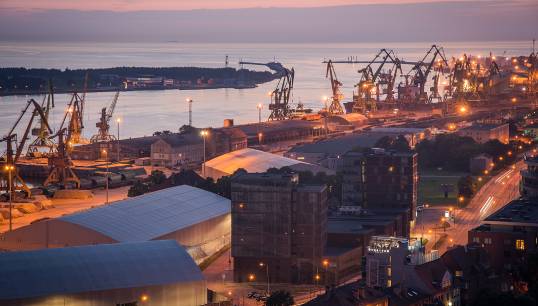
Lithuania's Port of Klaipėda, which has signed a contract for the installation of ro-ro port charging. Image: Wikimedia Commons
As battery technology transforms the maritime sector, marine engineers must adapt to new skills in energy management, electric propulsion, and advanced diagnostics. Employers, too, are starting to realise that they need to organise training, according to Norway-based international industry body Maritime Battery Forum (MBF).
'The jobs onboard ships will change,' MBF managing director Syb ten Cate Hoedemaker says. 'We need more people with knowledge of electric systems, both electrical engineers but also people that have an automation background. Because it's not just the electrical system, it's the control systems that you need to understand and how those work.'
On the upside, engineers will get less dirty from working with this kind of system, Mr Hoedemaker says. 'They're less noisy, so it's more comfortable for sure.'
Teaming up for crew training
The MBF counts 86 members, ranging from classification societies to shipping and shipbuilding companies, battery recyclers, as well as manufacturers of batteries and their components. It registered its 1,000th battery-powered ship in 2023. The number has now risen to 1,500, it says. The ship type and installed battery capacity per ship is also expanding.
The organisation says 20% of ships in its database are fully battery powered, though they may have a small back-up generator too.
An important part of MBF's work is education and training. It runs an online introduction to maritime batteries and battery safety. One of the organisation's members is Ocomp, a Norwegian training centre and research institute specialising in maritime safety. It has a particular focus on lithium-ion batteries and safety at sea.
Ocomp has trained over 3,000 seafarers in Norway on battery powered ships, according to Mr Hoedemaker. He points out Norway is the only country in the world with crew training requirements on battery powered ships.
Understanding employees' needs
Mr Hoedemaker acknowledges that seafarers might fear electrification and potential changes to their work it may bring. 'That's something that we as an industry really need to take seriously,' he says. MBF is raising these fears with ship designers, battery manufacturers, and electrical integrators.
'We need to take the seafarers on that journey with us. They need to be aware of the design choices that we make because it will affect their way of working, both for maintenance and operations, but also for safety. Seafarers must understand what they need to do in case of an incident with batteries, which is different than when there is an oil fire onboard, for example.'
Getting charging infrastructure in place
The UK's Faraday Institution, which undertakes battery research, skills development, market analysis and early-stage commercialisation, issued a report in February 2025 on batteries in the maritime industry. The report points out that battery charging is one of the biggest challenges, as there is a lack of shore-side charging facilities. Faraday is calling for more investment in port electrification infrastructure, as well as research and industry incentives to support the transition to battery powered shipping.
Examples of action taken in other countries could be seen at Singapore Maritime Week in March 2025, when the maritime and port authority of Singapore announced a new safety and technical standard for electric harbour craft charging infrastructure and battery swapping systems as part of Singapore's efforts to decarbonise the domestic maritime sector.
Meanwhile, Lithuania's Port of Klaipėda has signed a contract for the installation of ro-ro port charging infrastructure from next year. And the Brussels-based European Onshore Power Supply Association is promoting the widespread adoption of onshore power supply as a sustainable solution to reduce noise, vibration and air pollution from using fossil fuel engines in port and port city environments.
What's next?
It is now time for more maritime employers to get training in place for their seafarers, and for more ports to provide charging facilities.
The Faraday report says the UK in particular is well placed to do this, given its established strength in global shipping, alongside advancements in battery technology and the creation of national innovation centres. 'Realising the full benefits of this transition will require coordinated investments in both vessel technology and port infrastructure to enable wide-scale adoption of clean energy solutions,' it adds.
Nautilus nations gear up for electrification
As other European countries follow Norway's lead, Union members based in the Netherlands, Switzerland and the UK are likely to see new job opportunities on battery-powered vessels. So what's in store? Sarah Robinson, Andrew Draper, Amy Field and Deborah McPherson find out
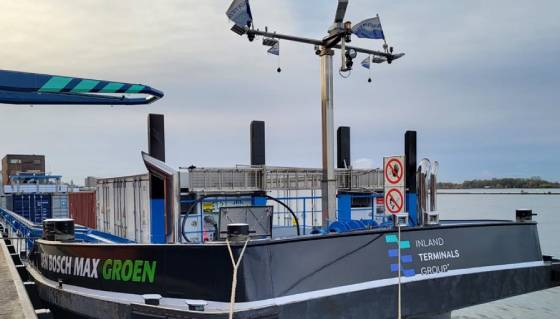
The Dutch cargo barge Den Bosch Max Groen, which is powered by swappable container-sized batteries developed by ZES. Image: ZES
Short-hop ferries and tour boats aren't every seafarer's cup of tea, but they attract people who want to work close to home and have a more family-friendly job. And it's these crew members who will soon find themselves on the front line of the industry's transition to new fuels as their vessels switch to propulsion by shore-charged batteries.
Nautilus supports the introduction of the new technology, which will improve local air quality for seafarers as well as the wider public, but the move to electrification must be part of a 'Just Transition' – with companies providing suitable training and safety standards, and avoiding job losses.
The Union's three national branches are all aware of companies in the Netherlands, Switzerland and the UK that are adopting battery technology, and are closely following developments to make sure Just Transition principles are followed.

In the UK, Nautilus has a strong membership base in companies operating lifeline island ferries, which will help the Union get a fair deal for crews operating electric vessels, strategic organiser John Coppell points out. 'We're also pleased to see jobs being created in our broader maritime sector, with companies using British boatbuilders such as Wight Shipyard to build their new battery-powered ferries.'
The Union's Netherlands and Switzerland branches currently have less of a presence on routes that are switching to battery propulsion, but the Union is working just as hard to ensure that electric vessels are safe for members to operate.
'Electrical education is just one part,' says senior national secretary in the Netherlands Marcel van Dam. 'The training model must change.' He points to the fierce fire on the car carrier Fremantle off the Dutch coast – exacerbated by electric cars – as a stark reminder of the need for specialised fire safety training. 'Electric fires are notoriously difficult to extinguish,' he warns.
So how is the shift to electrification going in the three Nautilus nations? We look below at the plans for battery-powered vessels that will be offering work to members in the coming years.
Innovation in the Netherlands
According to Syb ten Cate Hoedemaker of the Maritime Battery Forum, the Netherlands has a wide variety of over 60 battery-powered vessels. There are fully battery-powered GVB ferries in Amsterdam, several ferries in Dordrecht, river-crossing electric ferries Altena XI and Gorinchem XII, the event ship Zilvermeeuw Z9, and some electric workboats.
As Amsterdam's public transport operator, GVB has launched the first of five planned electric ferries on the North Sea Canal, supported by fast-charging infrastructure. Although the full fleet was expected by 2023, GVB is still consulting with industry and public organisations to finalise the transition.
Meanwhile, Netherlands-based manufacturer Zero Emission Services (ZES) has developed a swappable container-sized battery and charging infrastructure for vessels on inland and shortsea routes. These units can be swapped on and off vessels using standard container ship cranes and charged separately.
Clean air commitments in Switzerland
Switzerland's battery-powered vessels have some of the strongest green credentials around, due to the fact that they are charged from a national electricity grid dominated by renewable energy – particularly hydroelectric power.
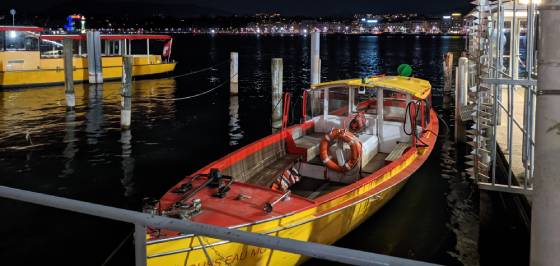
Swiss public transport operator Mouettes Genevoises is switching part of its fleet to battery and solar-powered vessels. Image: Wikimedia Commons
Known for its iconic yellow shuttles on Lake Geneva, public transport operator Mouettes Genevoises has been expanding its fleet of electric and solar-powered vessels. The company now operates two 60-seat electric/solar-propelled boats that connect ports across the Swiss section of the lake. Introduced between 2019 and 2020, these vessels are equipped with solar panels and are also charged ashore.
Eco-friendly sightseeing tours are also operating on the lake, including the 25-person sightseeing boat Greta. Solar and battery-powered vessels have become increasingly popular in the tour boat sector, due to their ability to offer a quieter and more comfortable ride compared to traditional diesel-powered engines.
Looking ahead, the Compagnie Générale de Navigation (CGN), which operates public transport across both the Swiss and French sections of the lake, has ordered two 700-passenger hybrid ferries. While these ferries will still be partially diesel-powered, they will feature state-of-the-art battery storage systems, aiming to reduce emissions by up to 40%.
Transition plans at major UK employers
Hundreds of Nautilus members work on ferry services around the UK, and many are bracing themselves for the shift to new fuels.
Operators in UK waters 'going electric' include DFDS and Brittany Ferries. DFDS announced in May 2024 an investment of €1 billion (£836 million) in six battery-powered ships sailing between Dover and Calais/Dunkirk. The first should be in operation in 2030, but the company said it will not be able to operate the vessels without sufficient power supply on land and infrastructure to accommodate charging facilities in ports.
Meanwhile, Caledonian MacBrayne (CalMac) has ordered seven new battery-powered vessels for its short routes around the Scottish islands. The vessels are due to start work in 2027, but concerns have been expressed in the Scottish parliament that some ports will not have sufficient charging power in time.
On the south coast of England, Isle of Wight ferry operator Red Funnel is hoping to introduce a fully-electric 'flying ferry' to its fast-crossing fleet, aiming for an ambitious zero-emissions target by charging using renewable energy.

However, the company that is closest to bringing a battery-powered vessel into operation in the UK is Uber Boat by Thames Clippers. Final tests and crew training are underway for the Orbit Clipper, a foot-passenger ferry which will operate between London’s Canary Wharf on the north side of the Thames and Rotherhithe on the south. With capacity for 100 bicycles, the vessel features a roll-on/roll-off design that enables automated docking on both sides.
Help your Union achieve a Just Transition

The pace of change towards battery-powered vessels underscores why joining Nautilus matters, says Marcel van Dam.
'We're at the table nationally and internationally, ensuring safety and support for all maritime professionals navigating this electric future.'
Union members at companies that are going electric can work with their allocated Nautilus organisers and local lay reps to negotiate the best possible training and safety standards for themselves and their colleagues.
Members can also have an input into the Union's standard-setting work with national governments and the International Maritime Organization by attending the Nautilus Professional and Technical Forum – held online or in hybrid sessions three times a year.
Tags
